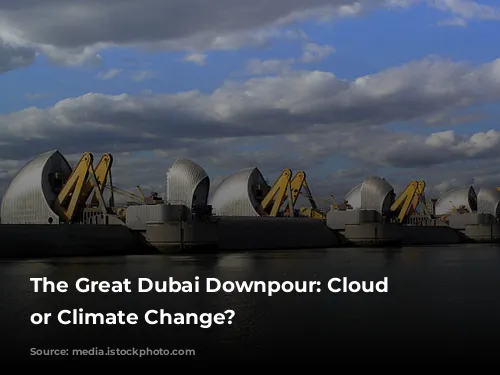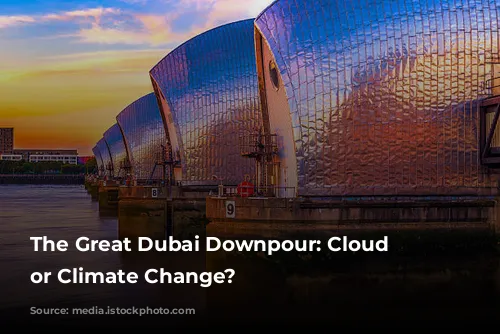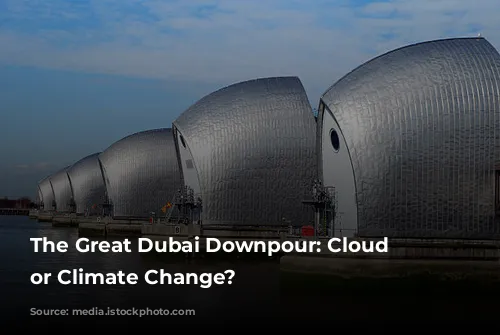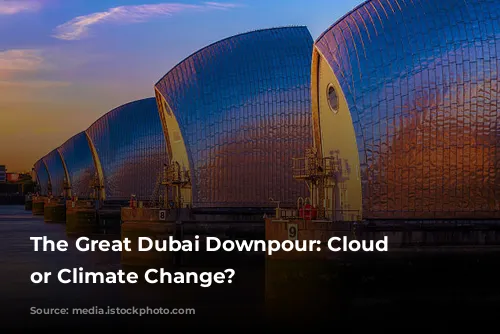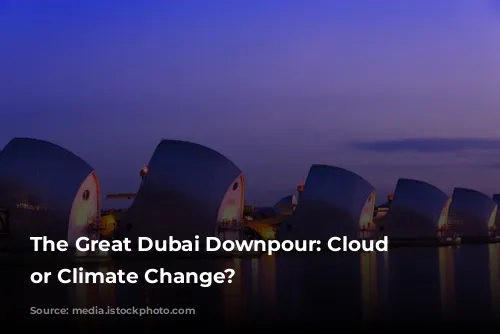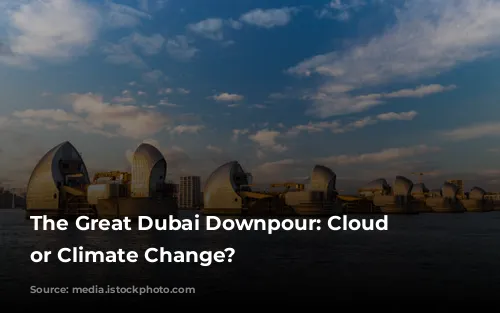Dubai, a vibrant city known for its luxurious skyscrapers and desert landscapes, experienced a shocking turn of events in mid-April. The city was hit by an unprecedented deluge, receiving a year’s worth of rain in a single day. This catastrophic event resulted in tragic loss of life, with 22 people sadly passing away, and massive infrastructure damage, costing hundreds of millions of dollars.
The torrential downpour flooded streets, causing widespread disruption. Schools across the UAE remained closed for the rest of the week, while iconic shopping malls like the Dubai Mall and Mall of the Emirates were submerged in ankle-deep water. Social media was flooded with images and videos of cars floating in flooded streets and people stranded at Dubai International Airport as runways became impassable.
Was Cloud Seeding to Blame?
The sheer volume of rain led to widespread speculation online, with many attributing the devastating floods to cloud seeding, a weather modification technique. Could this controversial technology be responsible for such a catastrophic event?
Climate change experts and meteorologists were quick to dismiss this theory. They explained that the true culprit was a cut-off low-pressure weather system, which drew in warm, moist air and effectively blocked other weather systems.
Prof. Maarten Ambaum, a renowned meteorologist from the University of Reading, who has extensively studied rainfall patterns in the Gulf region, emphasized in a BBC interview that while the region experiences long periods of drought followed by irregular heavy rainfall, this event was truly exceptional.
Prof. Richard Allan, a climate science expert from the same institution, pointed out that the intensity of the rain was record-breaking, a stark reminder of the escalating impacts of climate change. He stated that the increased moisture in the atmosphere, fueled by a warming climate, is leading to more powerful storms and devastating floods.
The Science Behind Cloud Seeding
Cloud seeding, while often a topic of controversy, is a complex process that relies on various engineering skills.
To enhance precipitation, aerosols are dispersed into clouds, serving as nuclei for the condensation of water vapor, promoting the formation of larger raindrops. These aerosols can be silver iodide or hygroscopic materials like salt, often dispersed from aircraft or ground-based generators.
The process requires careful monitoring and analysis of weather patterns, cloud types, and atmospheric conditions. It involves the use of specialized equipment and techniques, such as weather radar, weather balloons, and sophisticated modeling software.
Engineers play a crucial role in designing, developing, and implementing cloud seeding programs, ensuring safety, effectiveness, and minimal environmental impact.
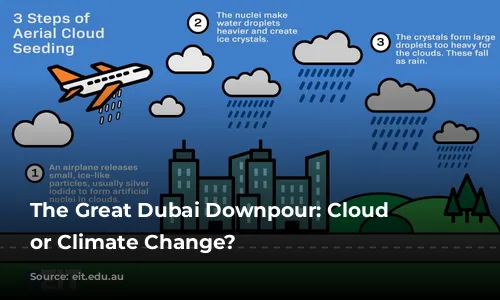
Climate Change and Extreme Weather Events
The recent flooding in Dubai highlights the devastating consequences of climate change. As global temperatures rise, the Earth’s water cycle is disrupted, leading to more frequent and intense extreme weather events like droughts, floods, and heatwaves.
Dr. Friederike Otto, a leading climate scientist from Imperial College London, stated in a BBC article that as long as humans continue to rely on fossil fuels like oil, gas, and coal, the climate will continue to warm, resulting in heavier rainfall and tragically, more lives lost to floods.
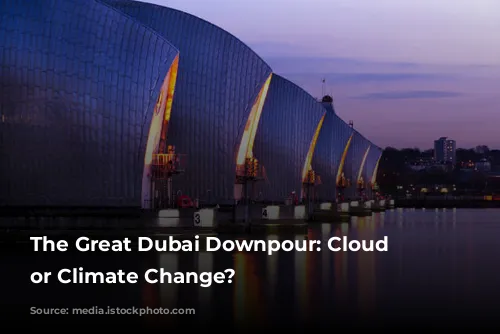
Engineers at the Forefront of Climate Change Solutions
While the world grapples with the challenges of climate change, engineers are at the forefront of developing solutions to mitigate its devastating impacts. They are playing a critical role in transitioning towards a more sustainable future.
One prominent example is the advancement in renewable energy technologies. Mechanical and electrical engineers are constantly improving the efficiency and affordability of solar and wind energy, making them viable alternatives to fossil fuels. Projects like the Hornsea One Offshore Wind Farm in the UK, the largest offshore wind farm globally, showcase how engineering can harness natural resources to generate clean energy on a massive scale.
Civil and structural engineers are contributing to sustainable urban development by promoting green building practices. By creating energy-efficient buildings with advanced insulation, smart lighting, and heating systems, they reduce energy consumption and minimize greenhouse gas emissions. The Bullitt Center in Seattle, USA, often hailed as the greenest commercial building globally, showcases how net-zero energy use can be achieved.
Through these efforts, engineers are crucial in the fight against climate change. They apply their expertise to develop solutions that promote sustainability and resilience, safeguarding the future of our planet.
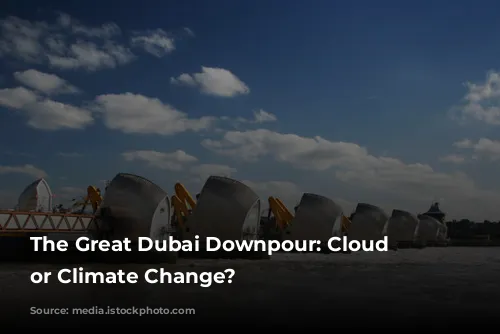
Explainer: What is Cloud Seeding and Did It Cause the Floods in Dubai?
Cloud seeding is a weather modification technique used to enhance precipitation. It involves dispersing aerosols into clouds, serving as nuclei for water vapor condensation. This process requires careful monitoring, specialized equipment, and a multidisciplinary approach.
While many initially attributed the devastating floods in Dubai to cloud seeding, climate change experts and meteorologists have debunked this theory. The true cause was a cut-off low-pressure weather system, fueled by a warming climate, leading to record-breaking rainfall.
